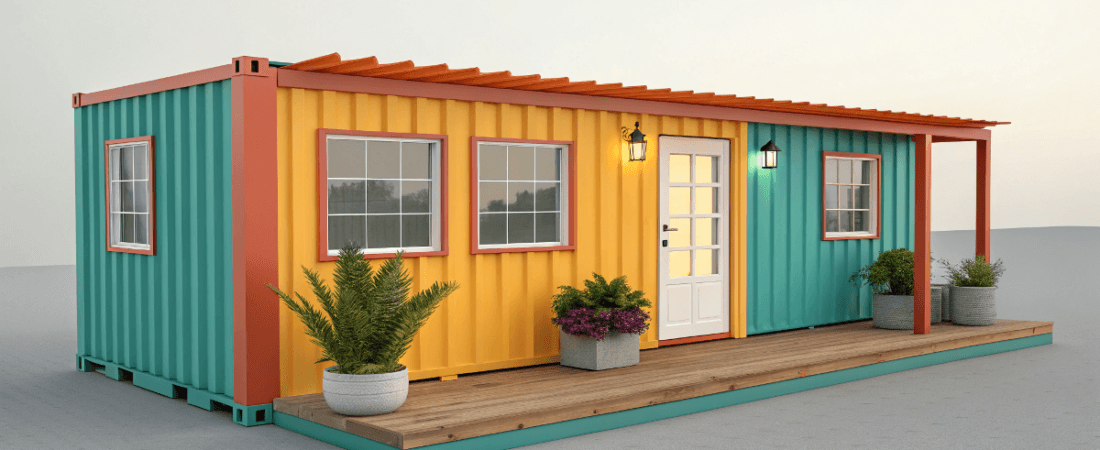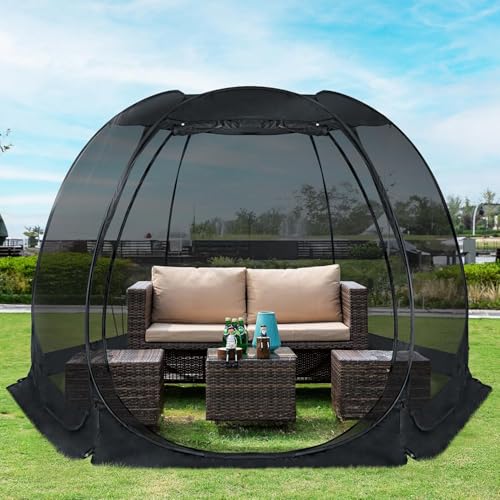Shipping container tiny houses transform used containers into affordable, durable, and eco-friendly homes. This article explores the benefits of shipping container tiny houses, design options, and building challenges associated with creating a shipping container tiny house.
- Key Takeaways
- Understanding Shipping Container Tiny Houses
- Challenges in Building Shipping Container Tiny Houses
- Popular Companies for Quality Shipping Container Homes
- Inspiring Shipping Container Tiny House Designs
- DIY Shipping Container Tiny House Projects
- Summary
- Frequently Asked Questions
- What are the main benefits of shipping container tiny houses?
- What are the challenges of building a shipping container home?
- Can shipping container homes be customized?
- How much does it cost to build a shipping container tiny house?
- Are there any companies that specialize in building shipping container homes?
Key Takeaways
Shipping container tiny houses offer a sustainable, cost-effective alternative to traditional homes, combining durability with eco-friendly living.
Customization is key; these homes can be tailored to individual tastes and needs, ranging from modern minimalist designs to rustic charm.
While there are challenges like insulation and zoning, proper planning and a DIY approach can lead to unique and rewarding living spaces.
Understanding Shipping Container Tiny Houses
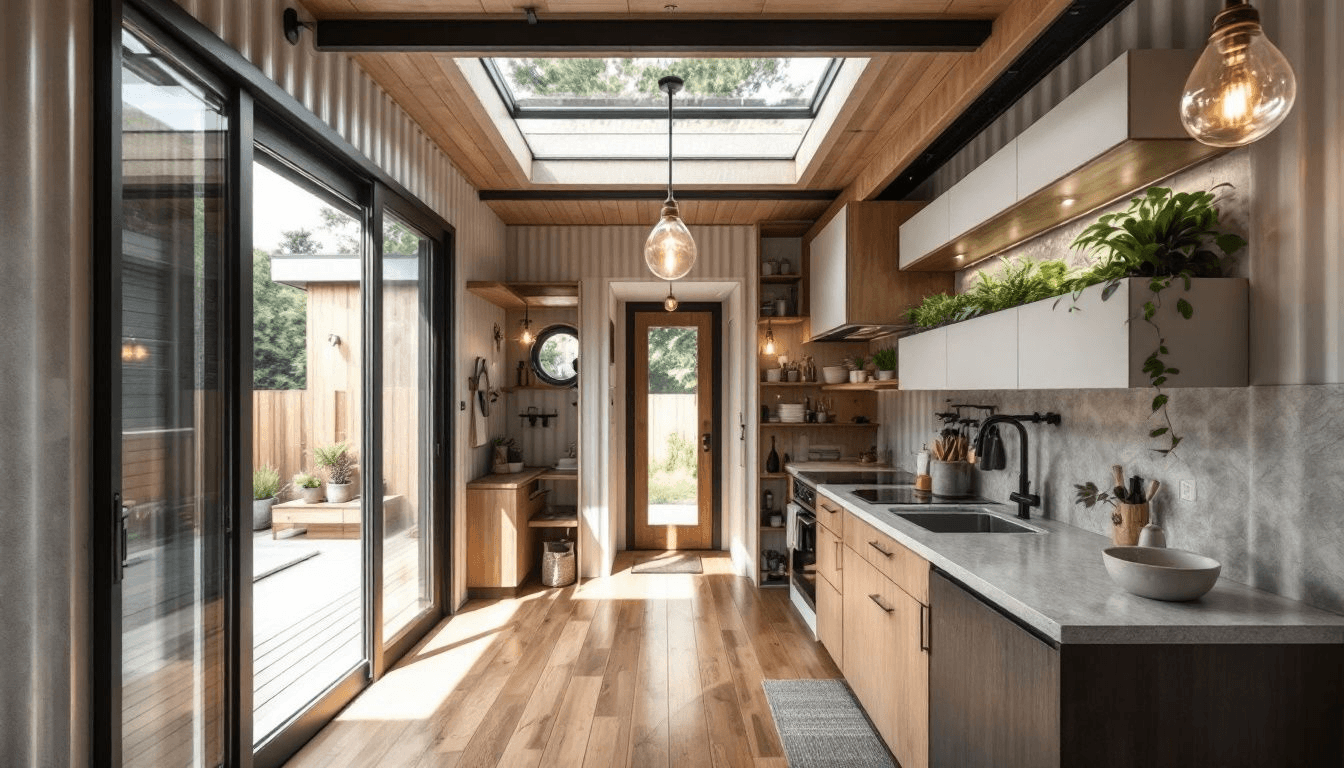
Shipping container tiny houses are more than just a housing trend; they represent a movement towards sustainable, cost-effective, and versatile living. Built from repurposed shipping containers, these tiny homes offer a compact and eco-friendly alternative to traditional houses. Numerous companies focus on building innovative shipping container homes, each offering unique designs and services.
Despite some structural challenges, such as insulation, these homes have gained popularity due to their strength, affordability, and environmental benefits.
Strength and Durability
One of the most significant advantages of shipping container homes is their strength and durability. Constructed from robust steel, these containers are designed to withstand extreme weather conditions and environmental wear, making them ideal for housing. However, it’s crucial to inspect used containers for rust and prior usage to ensure they maintain their structural integrity.
When converted into homes, these containers offer unmatched security and longevity, providing a reliable foundation for your tiny house.
Cost Efficiency
Shipping container tiny houses are a perfect solution for those seeking affordable and innovative housing options. The cost of a used shipping container ranges from $1,500 to $5,000, significantly reducing material expenses compared to traditional building materials. Additionally, the construction process requires less labor, further lowering overall costs.
This combination of affordability and innovative approach to housing makes shipping container homes an attractive option for many.
Eco-Friendly Living
Living in a shipping container tiny house is not only cost-effective but also environmentally friendly. Repurposing shipping containers for housing minimizes waste and reduces the carbon footprint associated with traditional construction. Companies like Alternative Living Spaces prioritize sustainability, creating energy-efficient homes that contribute to a healthier planet.
Opting for a shipping container home signifies a commitment to eco-friendliness and resourcefulness.
Versatile Designs
The design possibilities with shipping container homes are virtually limitless. These homes can be customized to reflect personal tastes and functional requirements, from full-sized kitchens to spacious living areas. Companies like Backcountry Containers offer a range of standard and custom designs, combining functionality with modern aesthetics.
Whether you prefer a rustic charm with natural materials or a sleek, modern look, shipping container homes can be tailored to create your dream living space.
Challenges in Building Shipping Container Tiny Houses
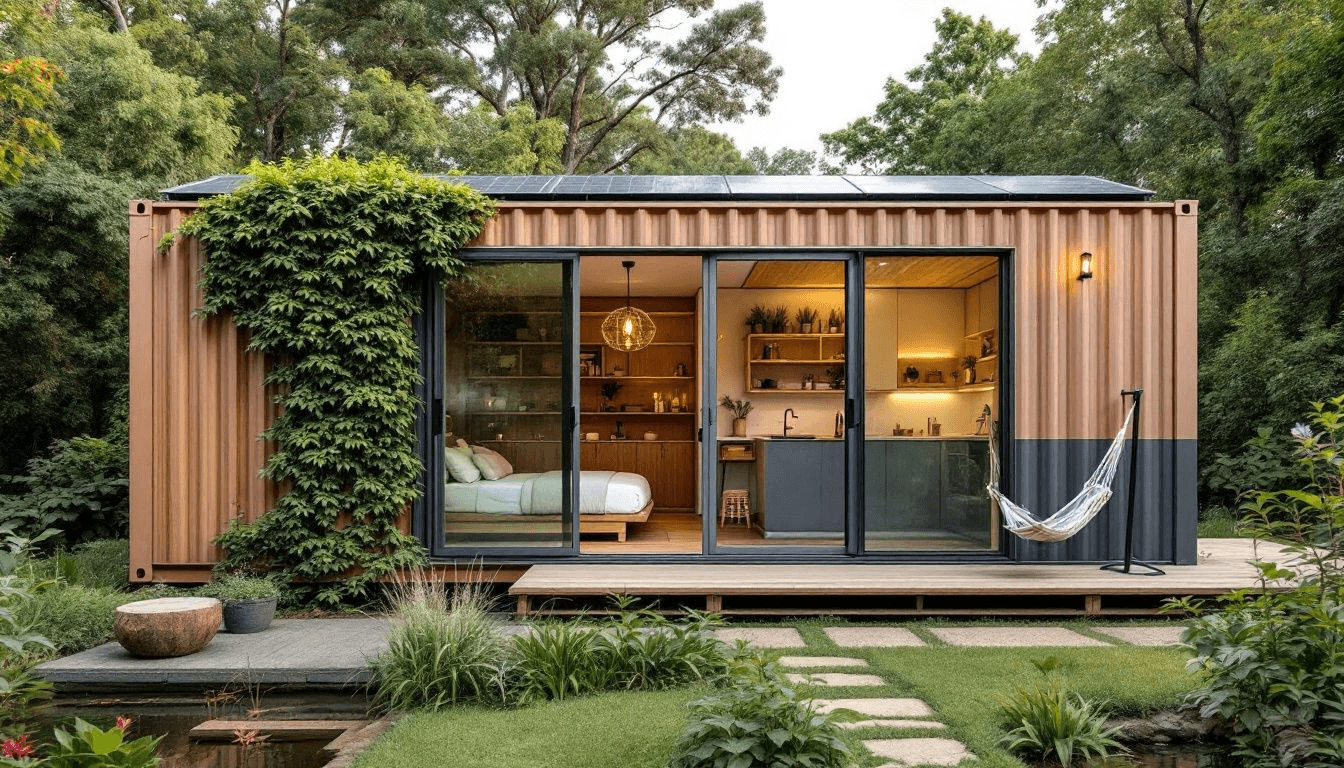
While shipping container tiny houses offer numerous benefits, building them comes with its own set of challenges. Insulating the metal structure to maintain livable temperatures can be tricky, and navigating local zoning laws and permits can be complex. Additionally, transporting and placing these heavy containers requires specialized equipment and careful planning.
Understanding these challenges is crucial for anyone considering building a shipping container home.
Insulation and Temperature Control
Insulating a shipping container home effectively is one of the primary challenges. The metal walls of shipping containers are thin, making it difficult to maintain a comfortable temperature without proper insulation. There are three main insulation strategies: interior, exterior, and a mixed approach, each offering unique benefits and potential downsides. Selecting the appropriate method ensures your container home remains comfortable year-round.
Interior insulation involves adding insulating materials inside the container, which can reduce the living space but is easier to install.
Exterior insulation, on the other hand, preserves the internal space but may require additional weatherproofing. A mixed approach combines both methods, balancing space preservation and effective insulation. Deciding on the best strategy depends on your specific needs and the climate where your container house will be located.
Zoning and Permits
Navigating the regulatory landscape is another significant challenge when building a shipping container home. Zoning laws and building permits vary widely from one municipality to another, making it necessary to research local regulations thoroughly. Demonstrating compliance with building codes and safety standards is crucial to securing the necessary permits.
Understanding these legal requirements early in the planning process can save time and prevent potential setbacks.
Transportation and Placement
Transporting and positioning shipping containers involves careful planning and specialized equipment. Containers need to be transported using trucks designed for heavy loads, such as tilt bed or flatbed trucks, depending on the distance. Additionally, navigating access routes and complying with local regulations on placement are essential to ensure a smooth installation process.
Proper logistics planning is key to overcoming these challenges and successfully placing your container home.
Popular Companies for Quality Shipping Container Homes
Several companies have emerged as leaders in the shipping container home industry, offering innovative designs and quality construction. These companies, such as CargoHome and Backcountry Containers, are known for their commitment to sustainable living and customer satisfaction.
By integrating eco-friendly practices and unique design features, they provide a range of options for those interested in shipping container tiny houses.
CargoHome
CargoHome specializes in converting shipping containers into stylish and sustainable tiny homes. Based in Texas, they offer a variety of models, each designed to maximize space and comfort. Their design services help customers create their dream homes, whether it’s a cozy retreat or a modern tiny house with a rooftop deck. CargoHome’s commitment to customer satisfaction and personalized consultations ensures that each project meets the client’s unique needs.
The Augustine model, for instance, is priced at $75,000, reflecting their dedication to affordability and quality.
Backcountry Containers
Backcountry Containers is a family-owned business that focuses on creating durable and high-quality shipping container homes. Their designs are built to withstand harsh weather conditions, making them suitable for off-grid living. The company emphasizes a personal touch and commitment to sustainability, ensuring that each home is tailored to the client’s needs and lifestyle.
Their custom container homes blend functionality with modern design, offering a unique living experience.
Custom Container Living
Founded by Robert Wagoner in 2015, Custom Container Living specializes in fully customizable tiny homes. They offer various floor plans, including studios and multi-bedroom options, allowing clients to design their perfect living space. Their commitment to quality and affordability makes them a popular choice for those seeking a unique and cost-effective housing solution.
Custom Container Living provides comprehensive support throughout the building process, ensuring a smooth and successful project.
Alternative Living Spaces
Alternative Living Spaces is known for its innovative and energy-efficient designs. They incorporate sustainable practices such as solar panels and rainwater harvesting systems to minimize environmental impact. By repurposing shipping containers, they promote eco-friendly living and reduce construction waste.
Their homes often feature large windows for natural light and efficient insulation techniques, creating a comfortable and sustainable dream home environment.
Inspiring Shipping Container Tiny House Designs
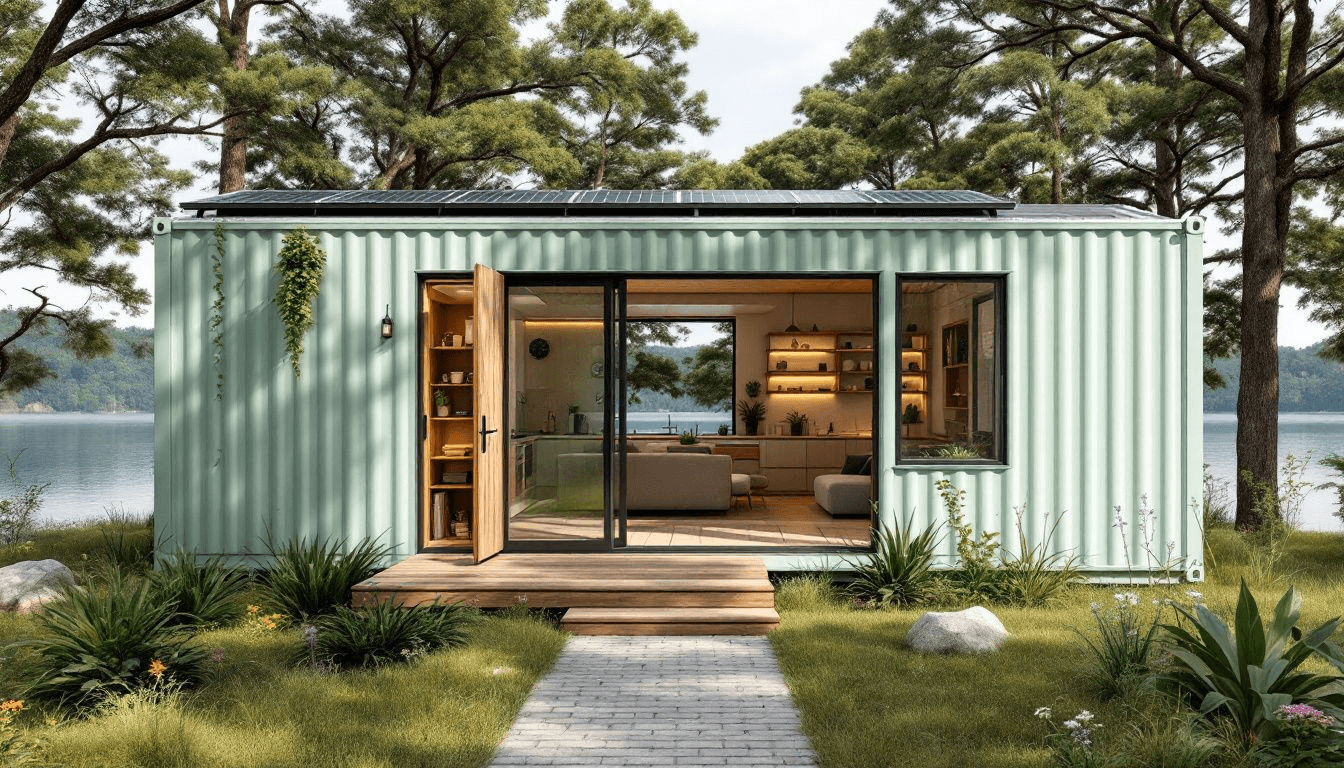
Shipping container homes can be designed in a variety of styles, each offering unique aesthetics and functionality. From modern minimalism to rustic charm, these homes showcase the versatility and creativity possible with shipping containers.
Combining multiple containers allows for innovative layouts that cater to different living needs, making these homes perfect for anyone looking for a unique and stylish living space.
Modern Minimalism
Modern minimalist designs emphasize simplicity, functionality, and aesthetic appeal. These homes often feature clean lines, open spaces, and large windows to enhance natural light and create a serene living environment.
By adapting the structure of shipping containers, individuals can create stylish and innovative spaces that reflect their personal tastes and commitment to a minimalist lifestyle.
Rustic Charm
Rustic charm in shipping container homes combines modern living with traditional aesthetics. Design features such as exposed wooden beams, warm color palettes, and vintage furnishings create cozy and inviting spaces. Materials like reclaimed wood and stone accents contribute to the overall warm ambiance, while large windows and outdoor spaces provide a seamless transition between the indoors and nature.
Multi-Container Homes
Multi-container homes offer expanded living areas by combining several shipping units into a cohesive structure. These designs facilitate innovative layouts, including multi-level designs that optimize space usage.
Combining 20- and 40-foot containers allows homeowners to create versatile and spacious environments tailored to different needs.
DIY Shipping Container Tiny House Projects
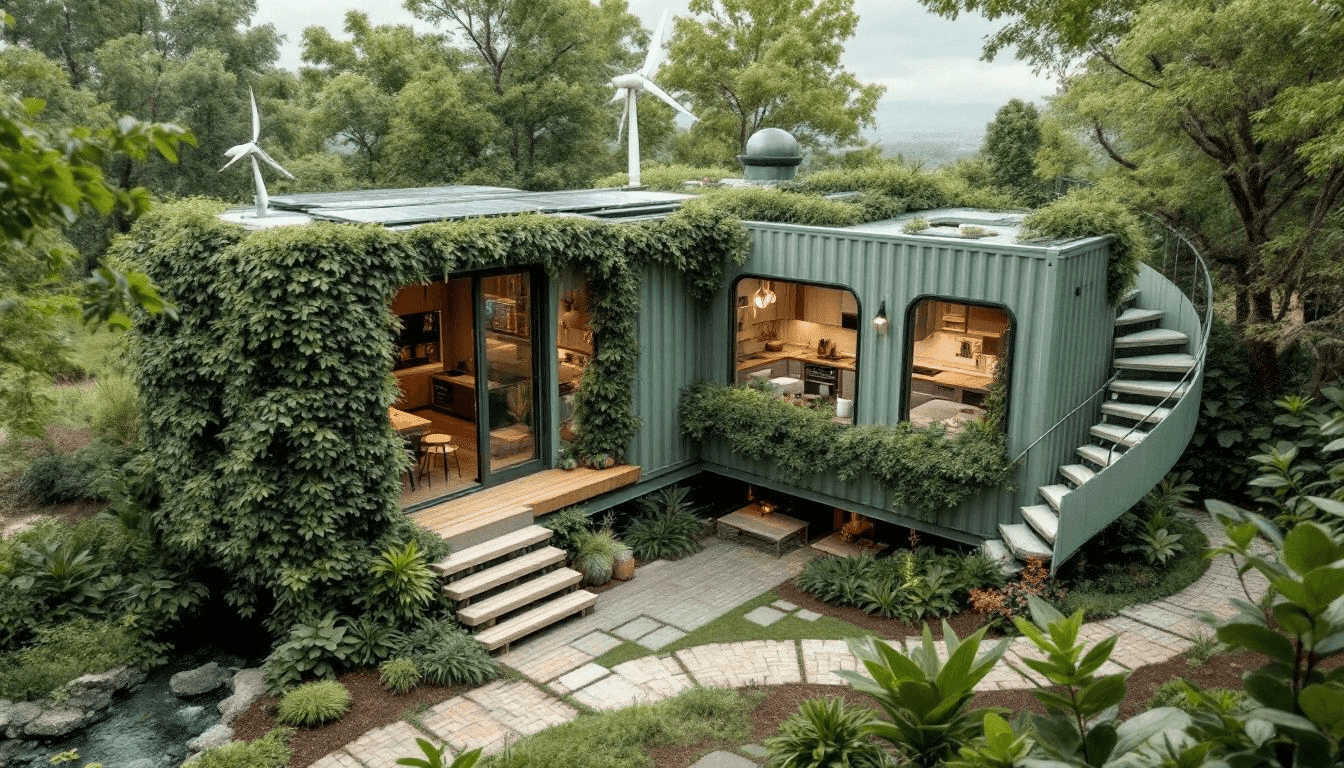
For those who love a hands-on approach, DIY shipping container tiny house projects offer a rewarding challenge. These projects require thorough planning and creative inspiration to ensure a successful build. The flexibility of shipping containers allows for easy modifications and expansions, making them ideal for DIY enthusiasts.
By taking on a DIY project, individuals can create personalized and unique living spaces that reflect their style and needs.
Planning and Budgeting
Effective planning and budgeting are crucial in the early stages of a DIY project. Creating a detailed floor plan helps determine room layouts and necessary dimensions, ensuring that all aspects of the build are accounted for.
Companies like Custom Container Living offer support throughout the building process, providing guidance from concept to completion. This comprehensive support helps DIY builders stay on track and manage their budgets effectively.
Sourcing Materials
Sourcing quality materials is a key aspect of any DIY shipping container tiny house project. Local suppliers specializing in shipping container sales can provide containers that are in good condition and suitable for conversion. Specialized dealers often focus on used containers, offering better pricing options without compromising quality.
Choosing the right supplier can significantly impact the overall cost-effectiveness and durability of your tiny house.
Real-Life Examples
Real-life examples of DIY shipping container homes showcase the creativity and determination of individuals who have successfully turned containers into cozy living spaces. One notable project involved a couple transforming a single shipping container into a functional home with innovative design solutions.
Many builders have customized their homes to reflect their personal style, overcoming zoning and permitting challenges along the way. These success stories inspire others to embark on their own DIY journeys.
Summary
Shipping container tiny houses offer a unique blend of affordability, sustainability, and versatility, making them an attractive option for modern living. Their strength and durability, combined with cost efficiency, provide a solid foundation for creating a personalized home. Eco-friendly practices and versatile designs further enhance their appeal, catering to a wide range of lifestyles and preferences.
However, building a shipping container home comes with its own set of challenges, such as insulation, zoning, and transportation. By understanding these obstacles and learning from the experiences of others, prospective homeowners can navigate the complexities and achieve their dream of living in a shipping container tiny house. Whether you choose to work with a professional company or embark on a DIY project, the possibilities are endless and the rewards are truly fulfilling.
Frequently Asked Questions
What are the main benefits of shipping container tiny houses?
Shipping container tiny houses are a fantastic choice because they are affordable, durable, and eco-friendly, allowing you to embrace a sustainable lifestyle while enjoying versatile living spaces. It’s a smart and innovative way to create your dream home!
What are the challenges of building a shipping container home?
Building a shipping container home can be challenging, especially with insulation and temperature control, zoning laws, and transporting the containers. However, with careful planning and creativity, you can overcome these obstacles and create a unique living space!
Can shipping container homes be customized?
Absolutely! Shipping container homes can be tailored to fit your unique style and needs, providing endless possibilities for your dream living space.
How much does it cost to build a shipping container tiny house?
Building a shipping container tiny house can be quite affordable, with used containers costing between $1,500 and $5,000. Just keep in mind that customization and construction will add to the overall expenses, but the investment can lead to a unique and convenient living space!
Are there any companies that specialize in building shipping container homes?
Absolutely! Companies like CargoHome, Backcountry Containers, Custom Container Living, and Alternative Living Spaces can help you create your dream shipping container home.


